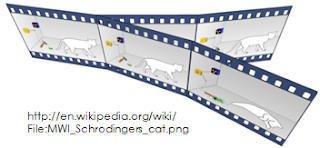This post fleshes out one aspect of my recent post on a requirements breakdown structure, giving examples of how to define goals as testable outcomes.
In my next post on this subject I will cover the context of why we want to use outcomes like this, when they are created, and by whom.
Goals Cascade Down from the Vision
At the top the requirements breakdown structure, defined in my previous post, and repeated here for clarity, is a vision, which is a strategic direction in which the organization wants to move. Meeting the vision could take the successful execution of many projects, executed on over many years. Each of these projects needs one or more defined goals, and that is where outcomes help.
Outcomes are Testable Goals
So, if our vision was…
Be the eBanking Provider of choice for small business customers
Then, we could have the following for an outcome.
Increase retention of small business eBanking customers by 20%.
Providing the Test
As you get closer to point where the rubber meets the road, you will want to get more specific about the outcome, ideally piggybacking off of an already existing reporting mechanism, and using something like the following.
Increase retention of small business eBanking customers by 20% as measured by the Customer Retention by Segment and Time Report from the business intelligence dashboard.
A similar outcome based on acquisition could be as follows.
Increase the acquisition of new small business eBanking customers, so that we gain 80,000 new small business eBanking customers in a one year period as measured by the Customer Acquisition by Segment and Time Report from the business intelligence dashboard.
More Examples
Here are a few more examples of goals expressed as outcomes with measures.
- In 18 months, decrease Total Cost of Ownership of our web systems by 25% as measured by …
- In six months, decrease the error rate on data provided to our top client, XYZ Corp, by 35%, ensuring rate is never > 1.25%, as measured by the error report file summary statistics they send weekly.
- In three months, decrease the time it takes to perform a release to three hours (3 months to 3 hours) as measured by the time ops starts the process to when the site is live to the customer.
Closing
This post covered “how” to create testable goals. In my next post on this subject I will cover the context of why we want to use outcomes like this, when they are created, and by whom.
Until then, please send along your comments and questions, and, of course, your samples.


